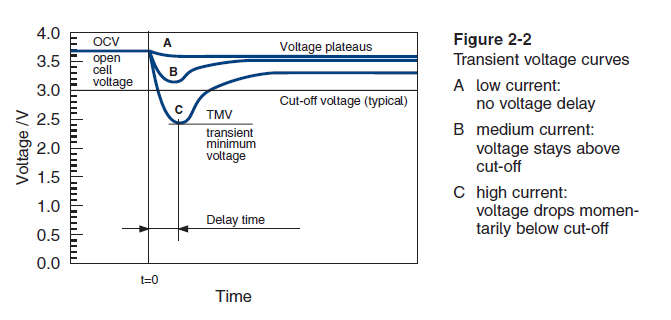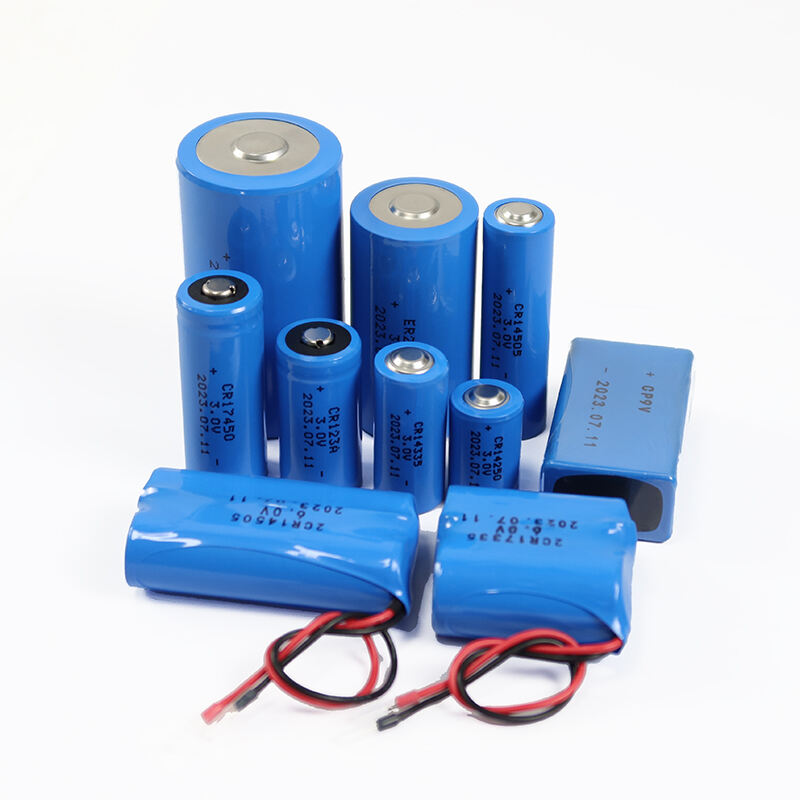Notícias
Instruções e precauções para utilização de baterias de cloreto de tionilo de lítio
Baterias de lítio com número de modelo começando com ER são baterias de cloreto de tiónilo de lítio (Li/SOCl2), que são classificadas como baterias primárias de lítio de acordo com os padrões internacionais de baterias. As baterias primárias de lítio são um novo tipo de bateria de alta energia e amiga do ambiente, com metal de lítio como eletrodo negativo. Elas são baterias não recarregáveis.
1. Baterias primárias de lítio são não recarregáveis
Carregar diretamente baterias primárias de lítio causará a explosão da bateria. A probabilidade de explosão da bateria está diretamente relacionada ao tempo de carga e à corrente. A carga de 220V explodirá instantaneamente. A carga de 12V CC fará com que a bateria exploda em alguns minutos. A carga de 5V CC sem componentes de proteção externa pode atingir uma corrente de carga de aproximadamente 50mA, e a bateria explodirá após algumas horas.
No caso de carga flutuante de 5V no circuito, recomenda-se que os clientes adicionem diodos e outras medidas de proteção no circuito para controlar a corrente de carga abaixo de 10µA.
É seguro controlar a corrente de carga das baterias primárias de lítio abaixo de 10µA.
2. Prevenir descarga forçada
Quando várias baterias são usadas em série, se outros modelos ou baterias usadas forem utilizados na bateria em série, algumas baterias podem experimentar descarga forçada (OverDischarge). Devido à irregularidade da capacidade da bateria, algumas baterias serão carregadas na fase final da descarga, o que pode causar acidentes com a bateria.
Para evitar a ocorrência de recarga, recomenda-se aos clientes que não montem baterias para uso.
Se você deseja usar uma única bateria em combinação, entre em contato com os técnicos, que fornecerão soluções de montagem e serviços de design de montagem.
3. Alta temperatura
Quando a temperatura ambiente da bateria primária de lítio excede 100°C, a bateria irá explodir, portanto, você deve prestar atenção no controle do tempo e temperatura durante o processo de soldagem.
4. Histerese e pontos de atenção
Como baterias de cloreto de tionilo de lítio possuem uma característica, que é a histerese de voltagem, que frequentemente faz com que os clientes usem a bateria para fornecer alta corrente, e a tensão de carga fique abaixo do limite mínimo aceitável pelo cliente, causando mau funcionamento do equipamento. Considerando que muitos clientes subestimam isso, é necessário que nós expliquemos em detalhes o desempenho de histerese da bateria.

Classe A: Sob condições de baixa corrente, embora a bateria seja passivada, a carga não mudará significativamente durante o uso. Tomando o ER14250 como exemplo, quando a corrente estiver abaixo de 1mA, a bateria não apresentará histerese (redução de voltagem) evidente.
Categoria B: Sob condições de corrente média, se a bateria estiver passivada, ainda assim a carga da bateria pode ser mantida acima da tensão de corte.
Tome como exemplo a bateria ER14250, quando a corrente está abaixo de 4mA, a tensão da bateria passivada irá cair, mas geralmente não cairá abaixo de 2,8V.
Categoria C: Sob condições de corrente alta, se a bateria estiver passivada, a carga da bateria pode facilmente cair abaixo da tensão de corte, causando o mau funcionamento do dispositivo. Tomando a bateria ER14250 como exemplo, quando a corrente atinge mais de 10mA. Se passivada, a carga cairá abaixo da tensão de corte (Cut-offVoltage).
Portanto, os clientes precisam compreender plenamente o fenômeno de histerese e tomar medidas correspondentes para reduzir o impacto da histerese. As seguintes sugestões são feitas durante o uso prático:
1. Considere o tamanho da carga, o ambiente de uso e outros fatores na fase de design, e selecione um modelo de bateria para uso sob condições de corrente média ou baixa.
2. O tempo de estoque da bateria pronta não deve exceder meio ano. Recomenda-se ativar a bateria após mais de meio ano.
3. Se a bateria estiver instalada no dispositivo e houver consumo de microamperes, o fenômeno de passivação da bateria é retardado. No entanto, se a corrente de design for maior que a corrente máxima de operação da bateria, recomenda-se considerar adicionar capacitores na fase de design para reduzir a queda de tensão da bateria.

V. Precauções durante o uso
1. Curto-circuito estritamente proibido, e recarga com corrente alta estritamente proibida.
2. Os usuários estão estritamente proibidos de combinar baterias por conta própria.
3. Descarga excessiva, esmagamento e incineração de baterias são estritamente proibidos.
4. Uso prolongado ou aquecimento fora da faixa de temperatura permitida é estritamente proibido (as baterias apresentam riscos de segurança quando a temperatura ultrapassa 100°C).
5. Verifique estritamente a embalagem externa antes de usar. Se a embalagem estiver danificada, descubra a causa e não a use facilmente. Quando as baterias embaladas estiverem espalhadas, classifique-as imediatamente, selando as baterias espalhadas e notificando o fornecedor.
6. É estritamente proibido misturar e usar baterias de séries e especificações diferentes em série.
7. Soldagem não pode ser realizada aleatoriamente na parte superior dos polos positivo e negativo da bateria, e a soldagem na placa de saída deve ser concluída em até 5 segundos.
8. Durante a operação, a bateria não pode ser espalhada ou deixada cair para evitar curto-circuito na bateria.
9. Após a descarga da bateria até a tensão final, é estritamente proibido continuar usando-a, e a bateria não pode ser mergulhada em água.
10. Baterias usadas devem ser marcadas e descartadas a tempo, e não devem ser armazenadas aleatoriamente.
11. Ao descascar e soldar os fios, não descasque os fios positivo e negativo ao mesmo tempo e não conecte os fios positivo e negativo com objetos metálicos para evitar curto-circuito na bateria.
12. Ao embalar e armazenar baterias excedentes da linha de produção, as baterias devem ser embaladas na embalagem original, arrumadas de forma organizada e não devem sofrer curto-circuito entre si.
13. As baterias excedentes da linha de produção devem ser armazenadas na embalagem original. Recomenda-se que a bateria seja armazenada em um ambiente com temperatura de <25 graus e umidade de <70% para evitar o armazenamento a longo prazo em ambientes adversos, que podem causar ferrugem e corrosão da bateria e provocar vazamentos.
14. Requisitos para instalação e uso da bateria: O polo positivo da célula da bateria deve ser colocado horizontalmente para cima. Quando o polo positivo está voltado para baixo, parte da capacidade não poderá ser utilizada e a taxa de utilização real será de apenas cerca de 80% do valor normal.
15. Mantenha a bateria longe de crianças para evitar lesões.
16. Baterias descartadas não podem ser destruídas por si mesmas e devem ser manipuladas de acordo com as regulamentações do departamento de proteção ambiental local.
O acima exposto são as precauções para o uso e operação de baterias primárias de lítio, que aqui são explicadas.


